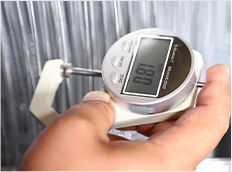building a pig pen
Oct . 07, 2024 04:58 Back to list
building a pig pen
Building a Pig Pen A Comprehensive Guide
Building a pig pen is an essential part of raising pigs, essential for both the welfare of the animals and the management of a successful pig farming operation. Pigs are intelligent and social creatures that require adequate space, shelter, and a clean environment to thrive. This article provides a comprehensive guide to constructing an effective and efficient pig pen.
Step 1 Choose the Right Location
Before beginning construction, it’s crucial to select the appropriate location for your pig pen. Look for a flat area that is well-drained and away from standing water and extreme weather conditions. The ideal site should also be near a water source and have access to electricity if necessary. Consider the proximity to your home or farm for ease of monitoring and feeding.
Step 2 Design the Pig Pen
The design of your pig pen will depend on several factors, including the number of pigs you plan to keep and the space you can allocate. Generally, a good rule of thumb is to provide at least 8 to 10 square feet per pig for smaller pigs and up to 20 square feet for larger breeds. The pen should have a sturdy perimeter fence to prevent pigs from escaping and to protect them from predators.
When designing the layout, consider incorporating different zones sleeping areas, feeding zones, and an exercise area. A roofed shelter should be included to protect the pigs from harsh weather; it can be a simple structure made from metal, wood, or tarpaulin. Ensure that the shelter is well-ventilated to maintain air quality.
Step 3 Gather Materials
Once you have a design in place, it’s time to gather materials. For fencing, galvanized steel or high-tensile wire is recommended due to its durability. Wooden fencing can also be effective but may require more maintenance. Make sure to have corner posts and gates for easy access.
For the shelter, you will need materials like plywood or metal sheets for walls, along with lightweight roofing material like corrugated metal. Don’t forget to stock up on bedding materials such as straw or hay, which help absorb moisture and provide a comfortable resting area for the pigs.
building a pig pen

Step 4 Construct the Pen
To begin construction, clear the designated area of any debris, rocks, or vegetation. Start installing the fence by setting the corner posts and securing them in place. Next, attach the wire or wooden panels to create a secure enclosure. Make sure the fence is tall enough—at least 4 to 5 feet—to prevent pigs from escaping.
Once the perimeter is established, focus on building the shelter. Create a sturdy frame using wooden beams or metal posts and then attach your chosen wall and roofing materials. Ensure that the structure is solid and can withstand the weight of the pigs, as well as the elements.
After the shelter is complete, add any necessary features, such as feeding troughs or water stations. Position these items in a location that minimizes waste and promotes hygiene.
Step 5 Maintain the Pig Pen
After your pig pen is built, regular maintenance is crucial for the health of the pigs. Implement a daily cleaning schedule to remove waste and ensure the living space remains hygienic. Check for any signs of wear or damage to the pen and make repairs as needed to maintain security and comfort.
Also, monitor the pigs’ health regularly, ensuring they have sufficient food and clean water. Conduct routine health checks to detect any signs of illness early on.
Conclusion
Building a pig pen may seem daunting, but with proper planning and execution, it can be a rewarding project that enhances the welfare of your pigs and the efficiency of your farming operation. By providing a safe and comfortable environment, you can ensure your pigs thrive and contribute positively to your farming endeavors.
-
Hot Sale 24 & 18 Door Rabbit Cages - Premium Breeding Solutions
NewsJul.25,2025
-
Automatic Feeding Line System Pan Feeder Nipple Drinker - Anping County Yize Metal Products Co., Ltd.
NewsJul.21,2025
-
Automatic Feeding Line System Pan Feeder Nipple Drinker - Anping County Yize Metal Products Co., Ltd.
NewsJul.21,2025
-
Automatic Feeding Line System - Anping Yize | Precision & Nipple
NewsJul.21,2025
-
Automatic Feeding Line System - Anping Yize | Precision & Nipple
NewsJul.21,2025
-
Automatic Feeding Line System-Anping County Yize Metal Products Co., Ltd.|Efficient Feed Distribution&Customized Animal Farming Solutions
NewsJul.21,2025






